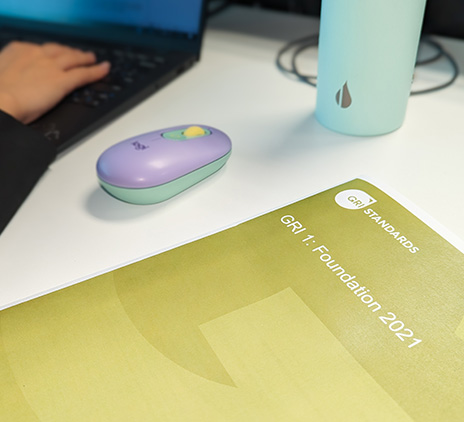-
Accounting Advisory
Our accounting advisory team help businesses meet their complex financial reporting requirements. The team can support in applying new financial reporting standards, IFRS/ US GAAP conversions, financial statement preparation, consolidation and more.
-
Payroll
Our team can handle your payroll processing needs to help you reduce cost and saves time so that you can focus on your core competencies
-
Managed accounting and bookkeeping
Outsourcing the financial reporting function is a growing trend among middle market and startup companies, as it provides a cost-effective way to improve the finance and accounting function. Our team can help with financial statement preparation, consolidation and technical on-call advisory.
-
Accounting Advisory
Our team helps companies keep up with changes to international and domestic financial reporting standards so that they have the right accounting policies and operating models to prevent unexpected surprises.
-
Crypto Accounting Advisory Service
Our team can help you explore appropriate accounting treatment for accounting for holdings in cryptocurrencies, issuance of cryptocurrencies and other crypto/blockchain related accounting issues.
-
ESG Reporting and Accounting
As part of our ESG and Sustainability Services, our team will work with you on various aspects of ESG accounting and ESG reporting so that your business can be pursue a sustainable future.
-
Expected Credit Loss
Our team of ECL modelling specialists combine help clients implement provisioning methodology and processes which are right for them.
-
Finance Transformation
Our Finance Transformation services are designed to challenge the status quo and enable your finance team to play a more strategic role in the organisation.
-
Managed Accounting and Bookkeeping Services
Outsourcing the financial reporting function is a growing trend among middle market and startup companies, as it provides a cost-effective way to improve the finance and accounting function. Our team can help with financial statement preparation, consolidation and technical on-call advisory.
-
CFO as a Service
Fast, flexible CFO support to guide growth, empower your team, and ensure lasting impact.
-
Business Tax Advisory
Our business tax team can help you navigate the international tax landscape, grow through mergers and acquisitions, or plan an exit strategy.
-
Corporate Finance
Our corporate finance team helps companies with capital raising, mergers and acquisitions, private equity, strategic joint ventures, special situations and more.
-
Financial Due Diligence
From exploring the strategic options available to businesses and shareholders through to advising and project managing the chosen solution, our team provide a truly integrated offering
-
Valuations
Our valuation specialists blend technical expertise with a pragmatic outlook to deliver support in financial reporting, transactions, restructuring, and disputes.

-
Sustainability with the ARC framework
Backed by the CTC Grant, businesses can tap on the ARC Framework to gain access to sustainability internally, transform business processes, redefine job roles for workers, and enhance productivity. Companies can leverage this grant to drive workforce and enterprise transformation.

-
Business Tax Advisory
Our business tax team can help you navigate the international tax landscape, grow through mergers and acquisitions, or plan an exit strategy.
-
Corporate Tax Compliance
Our corporate tax teams prepare corporate tax files and ruling requests, support you with deferrals, accounting procedures and realise tax benefits.
-
Tax Governance
Our Tax Governance Services are designed to assist organisations in establishing effective tax governance practices, enabling them to navigate the intricate tax environment with confidence.
-
Goods and Services Tax
Our GST team supports organisations throughout the entire business life-cycle. We can help with GST registration, compliance, risk management, scheme renewals, transaction advisory and more.
-
Transfer Pricing
Our Transfer Pricing team advises clients on their transfer pricing matters on and end-to-end basis right from the designing of policies, to assistance with annual compliance and assistance with defense against the claims of competing tax authorities.
-
Employer Solutions
Our Employer Solutions team helps businesses remain compliant in Singapore as well as globally as a result of their employees' movements. From running local payroll, to implementing a global equity reward scheme or even advising on the structure of employees’ cross-border travel.
-
Private Client Services
Our private client services team provides a comprehensive cross section of advisory services to high net worth individuals and corporate executives, allowing such individuals to concentrate on their business interests.
-
Welfare and benefits
We believe that a thriving team is one where each individual feels valued, fulfilled, and empowered to achieve their best. Our welfare and benefits aim to care for your wellbeing both professionally and personally.
-
Career development
We want to help our people learn and grow in the right direction. We seek to provide each individual with the right opportunities and support to enable them to achieve their best.

Introduction
I’ve always been a sci‑fi fan. From classic TV robots to Star Trek’s talking holodeck, I’ve long wondered what life might look like when machines could take on our everyday chores. In the real world, that journey started decades ago: George Devol and Joseph Engelberger’s Unimate handled hot metals and welding on factory floors, and when I was in the Navy, our EOD teams already relied on bomb‑disposal robots — albeit powered entirely by good old human judgment.
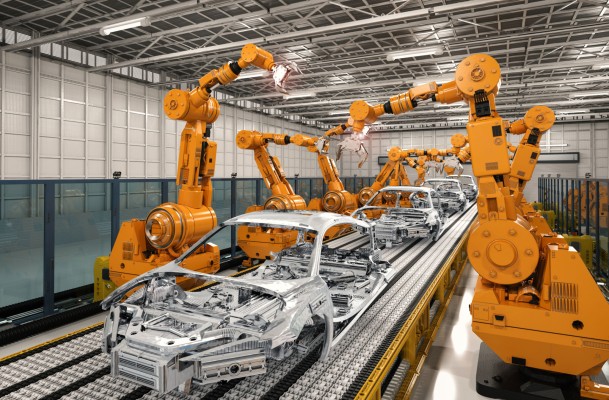
Source: Wevolver
Today, with the advent of AI and its integration to robotics, robots from Boston Dynamics (US), Unitree (China) and many others are captivating audiences with robots and drones with dexterity and abilities that far exceeds the stereotype of Hollywood ones. Robots from these companies can now perform complicated tasks like a surgery or a highly coordinated action as a hive (much like a centre command that works like a Borg Queen with the Borg Collective).
AI as a game changer and robotics as a catalyst
Many people perceived AI as the fourth version of the Industrial Revolution. The first was the development of Watts Steam Engine in the late 18th century, where it mainly impacted manual labours like the textile industry and farming — displacing hand looms with Spinning Jennies and Power Looms. The textile industry experienced a whooping gain in productivity between 700% to 11,900%. The second and third waves brought electrification (e.g. metros, assembly lines) and early digital tools (e.g. PCs, ERP systems) and the enhancement in productivity continues.
Despite the leaps, humans remained at the centre — these tools augmented people, they didn’t replace them. AI is different. For the first time, we can imagine humans not sitting at the centre of some of these economic activities. The power looms, the electrified metros and Microsoft Excel generate no real economic value on their own without humans. These tools augment human activities and depend on human ingenuity and diligence to deliver value.
The fourth Industrial Revolution of AI however was quite different — rather than being dependent on humans, AI is entirely capable of creating value on its own!
Why AI’s integration into the real economy matters socially — scale, speed, and depth of transformation
AI didn’t begin with ChatGPT. Lee Kai‑Fu had described a series of four AI waves. He proposed that we’ve moved through Internet AI, Business AI, Perception AI, and now into the early stages of Autonomous AI. What’s different now is how widely and quickly AI can touch real‑world work.
Take logistics — many logistic factories today are manned by robots and the comparison is stark. A typical manual sorter might handle 100–250 parcels per hour, while robotic systems can exceed 1,000 parcels in the same time. These superior performances are accelerating installations worldwide — hundreds of thousands of industrial robots were added in 2022, with the majority in Asia, and autonomous mobile robot (AMR) shipments are racing toward the million mark. China alone is the largest integrator of robotic services with over more than 52% of the entire installations!
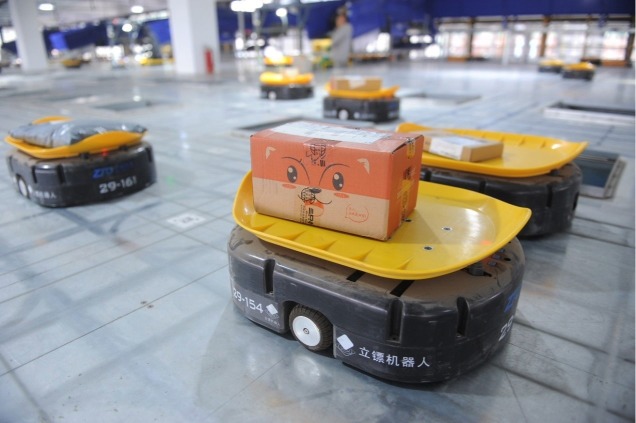
Source: People's Daily Online
With the introduction of ChatGPT and other large language models (DeepSeek etc.), we are now in the early stage of autonomous AI — where machines machines can now “see”, “hear”, and work in office settings, too — drafting emails, summarising research, and assisting with analysis. It’s not hard to imagine that some tasks we do today may no longer require a human tomorrow.
The big question is - what does that mean for us?
Macro-level shifts in the real economy
Every industrial revolution has promised sweeping changes, yet the 9-to-5 workday has remained remarkably resilient since the late 19th century. Iceland took a bold step between 2015 and 2019, reducing its standard workweek from 40 hours to 35, and similar experiments are underway in New Zealand and Japan. Singapore trimmed the civil service workweek from 5.5 days to 5 in 2004. Interestingly, this shift wasn’t framed as a reward for rising productivity but rather as a way to give Singaporeans more time to start families. Still, I suspect the underlying belief was that a 44-hour workweek was no longer essential for sustaining national growth, even back in 2004!
“Eleven o’clock at night, before you go to sleep, you check it again and next morning, you come back, somebody replied at 2.00 am. How to have children?” PM Lee, 2004 NDR
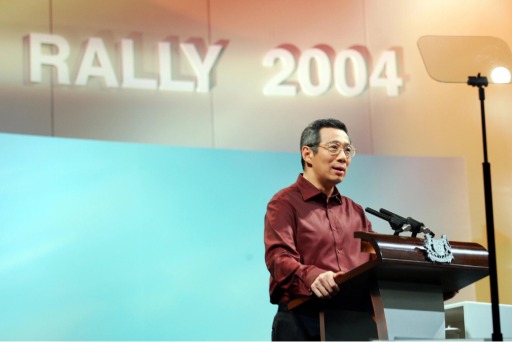
Source: Petir SG
AI pushes productivity gain further — much further than those previous waves of industrial revolutions. Not just confined to your mundane repetitive routines, users already saw how tools like ChatGPT (or DeepSeek) helped them draft proposals and non-repetitive work faster and often better. As speed rises, less labour will be needed across many roles — from routine tasks to creative work like logo design, writing, even counselling.
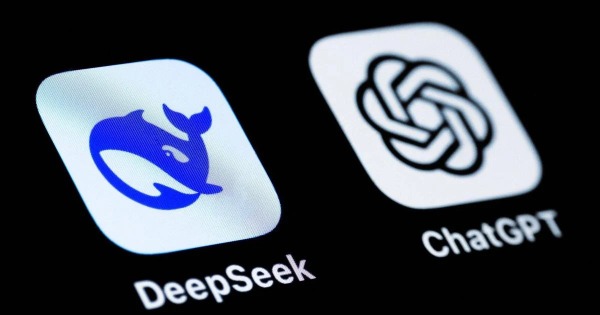
Source: Toronto Star
What are the scenarios?
What is likely to happen is a massive round of resource re-allocation like we had never seen before — at all levels. Everything, everywhere, all at once. Resources such as labour input, capital input and others.
The first major impact will be job redundancies and realignment. In previous industrial revolutions, displaced jobs were offset by new roles because rising efficiency fuelled demand for more — and better — goods and services. A growing global population and expanding middle class amplified this effect: from the pre-industrial era to 2024, the world’s population surged from about 770 million to 8.1 billion — an almost 8 times increase. In 1965, nearly 74% of Asia’s population lived below the $3.20 per day poverty line. By 2014, it was less than 10%, and extreme poverty (below $1.90 per day) dropped from 48.5% to just 2.6% during the same period!
While new types of jobs will almost certainly emerge, what’s uncertain is whether they will match the scale of job losses. The reason is unprecedented: AI can create value independently, without human labour. For example, AI systems today can predict disease progression and treatment response, enabling earlier interventions and better patient outcomes.
The disruption won’t stop at labour. AI will also reshape capital allocation. Algorithmic trading is already challenging traditional fund management, exposing even high-paying roles like portfolio managers to volatility. Advanced analytics, once exclusive to large institutions, are now accessible to individual investors. As capital chases higher returns, it will likely flow toward AI-heavy sectors and away from labour-intensive industries. This shift could reduce manufacturing capacity for basic amenities, leading to fewer goods being produced. With steady demand and shrinking supply, prices for basic necessities could rise, hitting the most vulnerable the hardest.
Ideally, the rise of AI could nudge humanity toward a more altruistic mindset — where success isn’t measured by material wealth, but by the good we contribute to society. Sound familiar? Any Star Trek fans out there? Gene Roddenberry, the creator of Star Trek, imagined a future without money — a bold economic fantasy rooted in the belief that humanity would outgrow greed and the need for wealth. While post-scarcity economics is not mainstream economics, which also means we’re quite far from that reality today, but perhaps with the right application, AI could free us from mundane pursuits and give us more time to focus on purpose and progress rather than possessions. As Captain Jean-Luc Picard famously said in Star Trek: First Contact: “The acquisition of wealth is no longer the driving force of our lives. We work to better ourselves and the rest of humanity.”

Source: Game Changer
What can we do?
What gets measured gets managed. Governments are moving: the EU AI Act, China’s comprehensive AI rules (data security, algorithm recommendations, deep synthesis, generative AI, labelling), and Singapore’s legal and non‑regulatory frameworks. Yet without data, even the best‑intended rules swing at a piñata blindfolded.
We need better visibility
Companies religiously track profit and efficiency, yet social metrics often lag behind. As far as social metrics are concerned, firms operating in Singapore must report serious workplace incidents and retrenchments (for companies with 10+ employees).
From 2025, all listed companies in Singapore are required to issue sustainability reports. Most focus on GHG emissions from own operations and utilities, while social disclosures rarely go beyond headcount and, occasionally, gender diversity. Advanced workforce impact metrics — especially those related to AI — are almost entirely absent, not just in Singapore but globally.
Without meaningful data, how can we address the profound workforce challenges AI will bring?
Currently, the predominant ESG framework for human rights and labour practices is the GRI Standard, which allows companies to measure areas such as:
- GRI 401: Employment – Covers hiring, retention, and employment conditions
- GRI 402: Labour/Management Relations – Focuses on communication and consultation between workers and management
- GRI 404: Training and Education – Addresses employee development and lifelong learning
- GRI 405: Diversity and Equal Opportunity – Requires disclosure on diversity in governance and workforce
- GRI 406: Non-Discrimination – Reporting on incidents of discrimination and corrective actions
- GRI 407: Freedom of Association and Collective Bargaining – Ensures workers’ rights to organise
- GRI 408: Child Labour – Policies and measures to prevent child labour
- GRI 409: Forced or Compulsory Labour – Measures to eliminate forced labour
- GRI 414: Supplier Social Assessment – Evaluates suppliers for social and labour practices
What to measure first?
It is clear that even the de facto standard to measure impact does not cover AI’s social impact adequately. While this paper does not purport to have the solutions, I would like to propose for some of the largest companies to start measuring how they are adopting AI into their businesses and hopefully the likely impact to their stakeholders by those adoptions.
Companies can start to disclose:
- How much they spend on systems that have some form of AI infused e.g. Microsoft, SAP or even others
- How much R&D they spent on developing AI solutions to augment their workforce
- The proportion of their business that are delivered by AI solutions
- Percentage of roles augmented by AI
Measurement is the starting point — it gives us the insights needed to act. To truly grasp AI’s profound impact on society, we must first understand how companies are adopting and integrating AI into their operations. From there, we need to assess how these operational shifts affect people’s livelihoods. Only with this knowledge can governments and businesses craft regulations and guidelines that ensure AI serves the well-being of humanity as a whole.
Conclusion
AI is emerging as one of the most disruptive forces in history — and perhaps humanity’s greatest opportunity to break free from the constraints of traditional scarcity economics. Yet, uncertainty looms. Governments and citizens alike are anxious about its societal impact, and rightly so. AI has the potential to be an extraordinary force for good, or a tool for extreme misuse and misinformation.
What’s clear, however, is that as we debate regulations and governance frameworks, we lack a critical foundation: data. Today, we have very little visibility into how AI is being deployed and what its real-world impacts are.
What we need now are progressive regulations that strike a balance, encouraging innovation while requiring companies and individuals to report on AI usage and its effects. Only then can we build the insights necessary to ensure AI serves society’s best interests.




